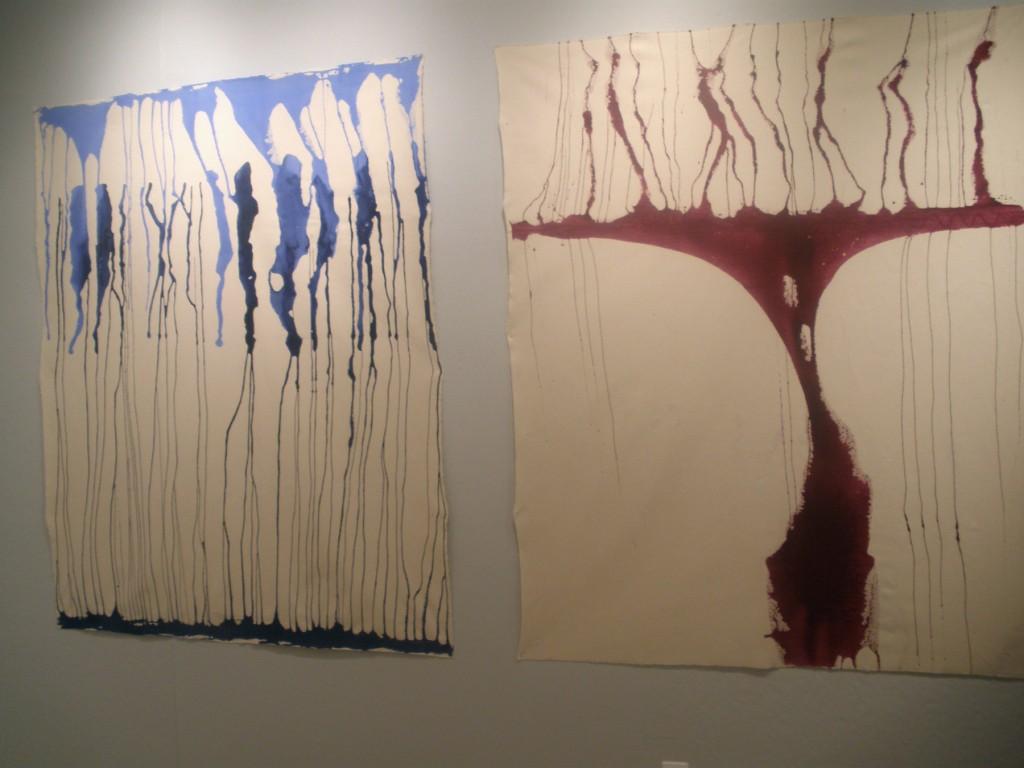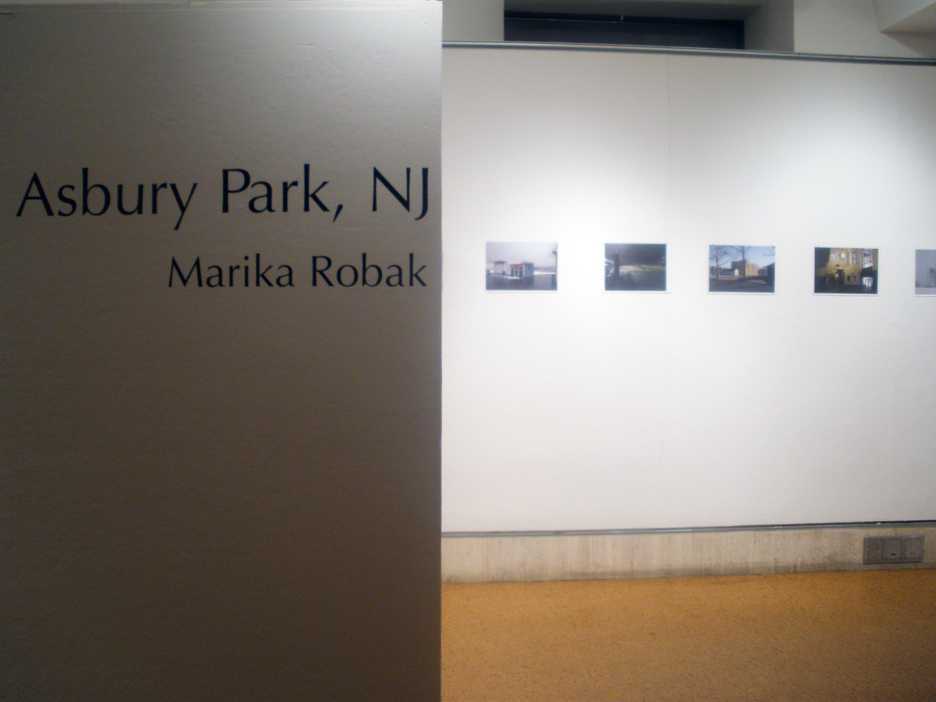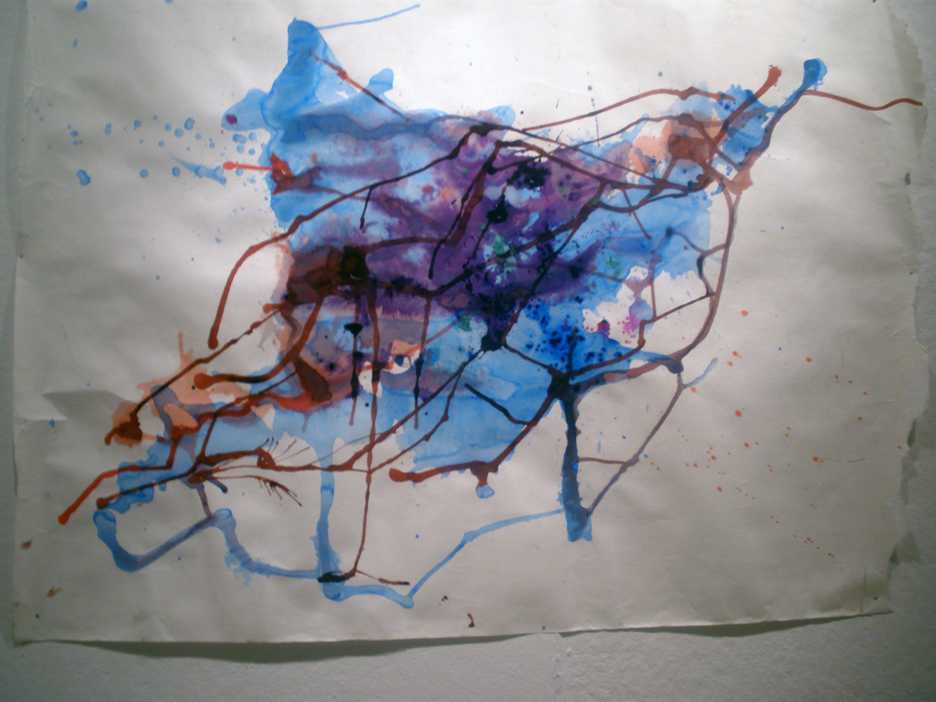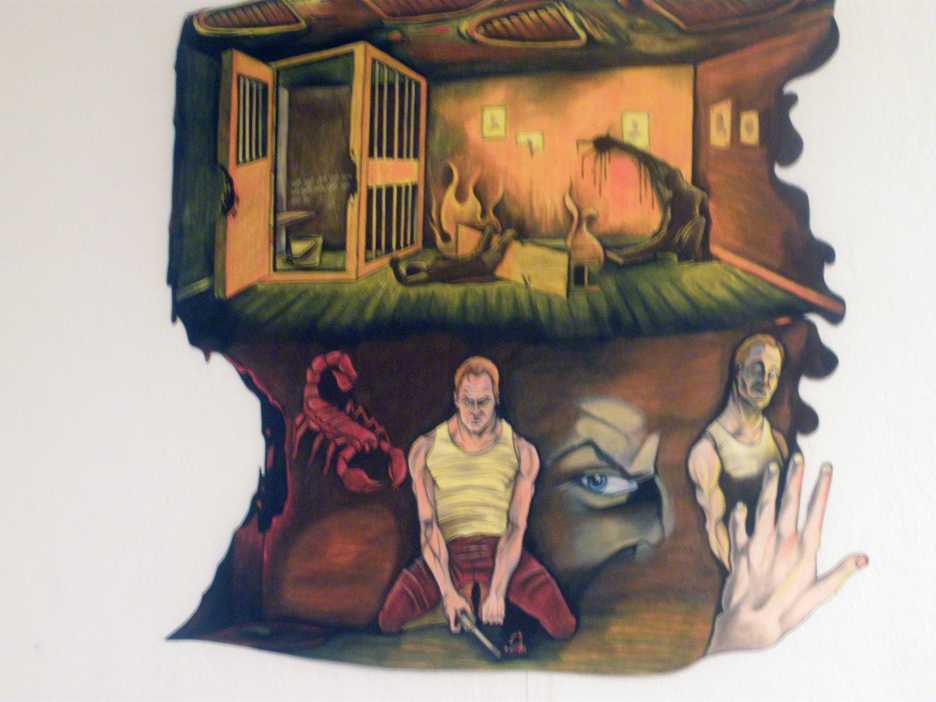Senior Show Spotlight: Paulie Dibner, Jennifer Melo, Marika Robak and Matthew Macri
June 22, 2011
Published: April 9, 2009
Every spring semester, the visual arts department showcases the work of a selection of senior arts majors who have been working on their thesis projects throughout their final year at Fordham College at Lincoln Center. The Arts & Culture section highlights these exhibitions as they change every two weeks. Paulie Dibner’s and Jennifer Melo’s shows will be on view in the Pushpin Gallery during April, and Matthew Macri’s and Marika Robak’s shows will be on view from April 3—18 in the Center Gallery.
Crosscurrents: Paulie Dibner

Crosscurrents is the exploration of color, line and process. Although the paints in my work share the same viscosity and application, the forms they create cannot be controlled and thus present a different result every time. Lines and shapes that appear engage the viewer in the tension between the foreground and the background, and the play between various tonal changes in color. Like two streams of water colliding and creating an entirely new crosscurrent, sometimes colors combine and form entirely new shades to be explored.
Asbury Park, NJ: Marika Robak

“It has been perceived that reality is hugely rich, that to be able to look at it directly is enough; and that the artist’s task is not to make people moved or indignant at metaphorical situations, but to make them reflect (and, if you like, to be moved and indignant too) on what they and others are doing, on the real things, exactly as they are.”
-Cesare Zavattini
Asbury Park is a city with a dual nature. Historically, it was one of the most romantic and enchanting places in the state, but it has become one of the most neglected and decrepit. In its heyday, it was a popular destination for shore tourists in the early 20th century. It never seemed to recover from the Great Depression. By the 1970s, it was consumed simultaneously by race riots and a burgeoning rock music scene, spawning such acts as Jersey’s number one hometown hero, Bruce Springsteen.
This dual nature manifests visually. Asbury Park is both a “city of ruins,” as the Boss called it, with dilapidated buildings waiting to be torn down; ancient, rusting hulks looming on the boardwalk; and run-down city strees, homes and storefronts. Side-by-side with these ruins, however, kitsch restaurants and boutique shops continue to crop up amidst the ruins in hopes of reviving the beachside tourist industry. The dilapidated Asbury is a testament to political corruption and economic corrosion; the revitalized Asbury a symbol of persistence and optimism.
Recording this duality afforded me the thrill of capturing a series of distinct moments in this specific place and time. Although my goal is objectivity, this is only possible insofar as each moment itself is objective. As Zavattini observed, “reality is hugely rich.” There is depth to every moment, but it is the viewer’s role to perceive and enjoy it.
For these photographs, I shot in color, using a digital camera, mounted with a wide-angle lens to achieve a descriptive viewpoint that invites the viewer into each image as a space to explore. The added element of color captures the immediacy, mood and presence of each moment—exactly as it is.
Synapsis: Jennifer Melo

No matter how hard we try, we will never have complete control over our lives. Though we may steer ourselves in the general direction that we want to go (or sometimes not at all), there are so many factors (people, chance, fate, God?, weather, government) that take control out of our hands. And then there is the struggle to get it back.
My work deals with issues of control, or the lack thereof, as well as the struggle to regain control. I use watered-down acrylic paint and ink on sheets of torn paper. Instead of painting with a brush, I pour the paint/ink onto the paper and then manipulate it by moving the paper and by blowing on it. Here is the struggle for control. The paint, though I’m “telling” it to go somewhere, doesn’t always go there. It doesn’t always dry the way I want it to, either, and the paper crinkles in spots where I wanted it to be smooth. The result is a representation of those instances in life when something takes away the hold we have on our trajectory.
Visually, the works look spontaneous and accidental. The colors bleed together; the lines and silhouettes of the shapes are organic. This gives the illusion that all of it is due to a lack of control I have over my materials, though only some of it is due to that. The color palette is made up of mostly organic colors, the kinds you would find inside the human body, which suggests the naturalness of this lack of control. I want my work to ask the question: Are we really supposed to have control?
Shotgun Sinners: Matthew Macri

One of the greatest time-honored traditions in American art is the comic book. My fascination with the art form involves seeing what happens when the comic book is dissected and stripped of its super heroes, catchphrases, powers and, structurally speaking, its staples, text and frames. We are left with a pure inundation of imagery, flowing from one scene to the next, free of full disclosure and restriction.
Shotgun Sinners is a tribute to the heart of comics, which are its characters, narrative and engaging illustration. The resulting story revolves around frantic dreams, a world that is full of questions and leaves few answers. Often our dreams or nightmares leave us confused regarding their meaning due to the vague continuity and ambiguous series of events that take place in our subconscious as we sleep. We sometimes struggle to relate those dreams to our lives. This story of good against evil is a tribute to comic books as well as the enigmatic phenomena of dreams mimicking reality.









